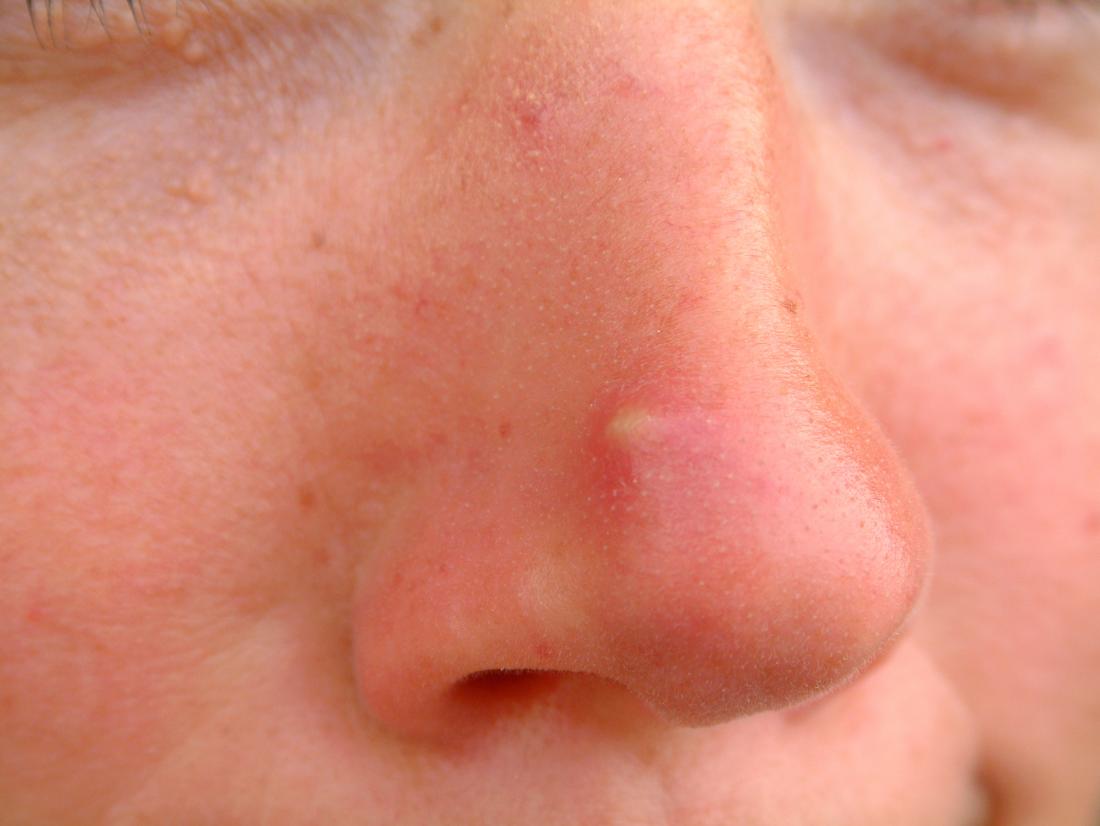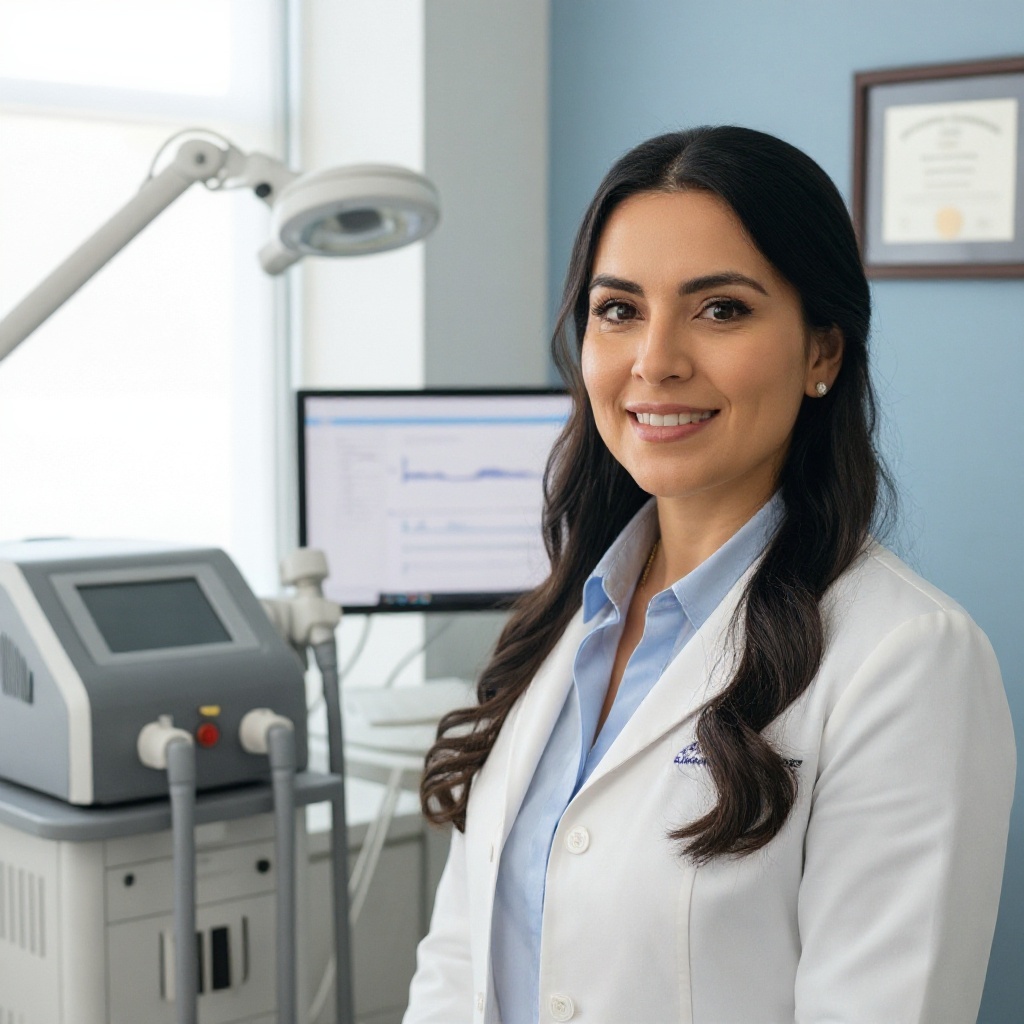Pimples on the Nose - Causes, Treatment, and When to Worry

Key points
- Clogged Pores (Acne Vulgaris): This is the most common cause. A mixture of excess sebum (oil), dead skin cells, and bacteria blocks a pore, leading to inflammation and the formation of a pimple.
- Bacterial Infections: Sometimes, what looks like a pimple is actually a minor infection. Folliculitis occurs when a hair follicle becomes infected, often by Staphylococcus (staph) bacteria, creating a red, painful bump. For pimples inside the nose, nasal vestibulitis—an infection at the entrance of the nostril—is a common culprit, often triggered by nose picking or excessive nose blowing.
- Hormonal Fluctuations: Changes in hormones, especially during puberty, menstruation, or periods of stress, can ramp up oil production and lead to acne.
- Stress: While stress doesn't directly cause acne, it can worsen it. As Center for Dermatology & Laser Surgery notes, stress can trigger hormonal changes that lead to more oil production.
- External Factors: Things like oil-based makeup, sweat, and frequently touching your face can transfer dirt and oil, contributing to clogged pores.
A pimple on the nose can feel like it's in the spotlight—it's front and center, often painful, and notoriously difficult to conceal. Whether it's a small whitehead on the tip, a sore bump on the side, or even an uncomfortable spot inside your nostril, you're not alone in dealing with it.
This comprehensive guide covers everything you need to know about nose pimples, from their primary causes and different types to safe, effective treatments and crucial prevention tips. We'll also explore special cases, like pimples inside the nose and the much-talked-about "danger triangle."
Why Is the Nose Such a Pimple Hotspot?
The nose is one of the most common places for pimples to form, and there's a simple reason for it. The skin on your nose contains a high concentration of sebaceous (oil) glands, and the pores in this area are often larger than elsewhere on your face. According to Vinmec International Hospital, this combination makes the hair follicles on the nose more susceptible to becoming clogged with excess oil, dead skin cells, and bacteria, leading to breakouts.
Common Causes of Pimples on the Nose
Most nose pimples are a result of clogged pores, but several factors can contribute to their formation.
- Clogged Pores (Acne Vulgaris): This is the most common cause. A mixture of excess sebum (oil), dead skin cells, and bacteria blocks a pore, leading to inflammation and the formation of a pimple.
- Bacterial Infections: Sometimes, what looks like a pimple is actually a minor infection. Folliculitis occurs when a hair follicle becomes infected, often by Staphylococcus (staph) bacteria, creating a red, painful bump. For pimples inside the nose, nasal vestibulitis—an infection at the entrance of the nostril—is a common culprit, often triggered by nose picking or excessive nose blowing.
- Hormonal Fluctuations: Changes in hormones, especially during puberty, menstruation, or periods of stress, can ramp up oil production and lead to acne.
- Stress: While stress doesn't directly cause acne, it can worsen it. As Center for Dermatology & Laser Surgery notes, stress can trigger hormonal changes that lead to more oil production.
- External Factors: Things like oil-based makeup, sweat, and frequently touching your face can transfer dirt and oil, contributing to clogged pores.
Is It Really a Pimple? Other Bumps on the Nose
Not every bump on your nose is a standard pimple. It's important to distinguish between them, as treatments can differ.
- Rosacea: This chronic skin condition can cause persistent redness and small, pus-filled bumps that look like acne. A key difference is the accompanying flushing and persistent redness, which is not typical of acne.
- Fibrous Papule: This is a small, firm, harmless bump that often appears on the nose. According to the Cleveland Clinic, fibrous papules are noncancerous and don't require treatment unless you want them removed for cosmetic reasons. They do not respond to acne treatments like salicylic acid.
- Periorificial Dermatitis: This condition presents as an acne-like rash of small pink bumps, typically around the mouth, nose, and eyes. The bumps are often dry and scaly.
- Basal Cell Carcinoma: In rare cases, a persistent pimple that doesn't heal, bleeds, or scabs over could be a form of skin cancer. If you have a spot that won't go away, it's crucial to have it checked by a dermatologist.
 Image Source: Medical News Today
Image Source: Medical News Today
How to Treat a Pimple on Your Nose Safely
When a nose pimple appears, the temptation to pop it is strong, but resisting that urge is the single most important step. Popping can lead to scarring, deeper infection, and more inflammation.
At-Home Remedies and Self-Care
- Warm vs. Cold Compresses: The right temperature can make a big difference.
- Cold Compress (Ice): Best for red, swollen, and painful pimples (like cysts). The Cleveland Clinic suggests wrapping ice in a cloth and applying it for 10-15 minutes to reduce inflammation and pain.
- Warm Compress: Ideal for pimples trapped under the skin ("blind pimples"). The warmth helps open pores and encourages the trapped material to come to the surface. Apply a warm, wet washcloth for 10-15 minutes, a few times a day.
- Pimple Patches: These have become a popular and effective spot treatment.
- Hydrocolloid Patches: These are best for pimples that have already come to a head. They absorb pus and oil, creating a moist environment that speeds up healing while protecting the blemish from bacteria and picking.
- Medicated Patches: Some patches contain active ingredients like salicylic acid or tea tree oil to help treat the pimple more directly.
- Gentle Skincare: Wash your face twice daily with a mild, gel-based cleanser to remove excess oil and impurities without stripping your skin.
Over-the-Counter (OTC) Treatments
For more stubborn pimples, look for products containing these proven ingredients:
- Benzoyl Peroxide: Kills acne-causing bacteria and helps remove excess oil.
- Salicylic Acid: An exfoliant that gets inside the pore to dissolve dead skin cells and oil.
- Azelaic Acid: A natural acid that kills microorganisms and reduces swelling.
When to See a Doctor
If at-home and OTC treatments aren't working, or if your nose pimples are frequent and severe, it's time to see a dermatologist. You should also seek medical attention if:
- The pimple lasts longer than two weeks.
- It is extremely painful, and the swelling is spreading.
- You develop a fever or chills.
A doctor can offer prescription-strength treatments, such as topical or oral antibiotics, retinoids, or in-office procedures like drainage for a painful cyst.
Special Case: The Pimple Inside Your Nose
A pimple inside the nostril can be particularly painful. This is often caused by nasal vestibulitis (an infection of a hair follicle) or an ingrown hair.
As dermatologist Fatima Fahs, MD, tells SELF Magazine, it's crucial not to apply traditional acne creams inside your nose, as the mucosal skin is too sensitive. Instead:
- Apply a Warm Compress: Place a warm, damp cloth on the outside of your nose over the affected area to reduce pain and help it drain.
- Use a Saline Rinse: A sterile saline nasal spray can help keep the area clean and flush out irritants.
- Don't Pick or Pluck: Avoid trying to tweeze ingrown hairs or pop the pimple.
If the pain is severe or swelling spreads, see a doctor, who may prescribe a topical antibiotic ointment like mupirocin.
The "Danger Triangle": Separating Fact from Fear
You may have heard of the "danger triangle" or "triangle of death"—the area from the corners of your mouth to the bridge of your nose. This area is noteworthy because its blood vessels have a direct connection to the cavernous sinus, an area in your brain.
Image Source: Business Insider
The concern, as highlighted by a viral story covered by Newsweek, is that popping a pimple here could allow a skin infection to travel to the brain, potentially causing a rare but life-threatening blood clot called cavernous sinus thrombosis.
What is the real risk? While this complication is extremely rare, it underscores the importance of not popping pimples, especially in this sensitive zone. A simple pimple is unlikely to cause a problem, but an infected one carries a higher risk.
Warning signs of a spreading infection include:
- Severe headache or neck stiffness
- Fever and chills
- Spreading redness and swelling, especially around the eyes
- Vision changes or difficulty moving your eyes
If you notice these symptoms after a pimple appears in this area, seek immediate medical attention.
How to Prevent Pimples on the Nose
The best treatment is prevention. To keep your nose clear, adopt these habits:
- Wash your face daily: Use a gentle cleanser twice a day and after sweating.
- Use non-comedogenic products: Choose makeup and skincare products labeled "non-comedogenic," meaning they won't clog pores.
- Keep your hands off your face: Avoid touching your nose to prevent transferring oils and bacteria.
- Manage diet and hydration: Drink plenty of water. Some research suggests a low-glycemic diet may help reduce acne.
- Wear sunscreen: Sun exposure can dehydrate the skin, leading to more oil production. Choose an oil-free sunscreen.
By understanding the causes and adopting a consistent, gentle approach to treatment and prevention, you can manage nose pimples effectively and keep your skin healthy and clear.
References
- Cleveland Clinic. (2022). Pimples: Causes vs. Acne, Types & Treatment. https://my.clevelandclinic.org/health/diseases/22468-pimples
- Cleveland Clinic. (2025). Fibrous Papule of the Nose: Causes, Treatment & Removal. https://my.clevelandclinic.org/health/diseases/fibrous-papule-of-the-nose
- Health.com. (n.d.). Triangle of Death on the Face: Should You Be Concerned?. https://www.health.com/beauty/skincare/triangle-of-death
- SELF Magazine. (2024). What Do I Do About a Pimple INSIDE My Nose???. https://www.self.com/story/pimple-inside-nose
- Vinmec International Hospital. (n.d.). Pimples on nose: causes and treatments. https://www.vinmec.com/eng/blog/nose-acne-causes-and-treatment-en
- Newsweek. (2025). Horror as woman winds up in urgent care after trying to pop pimple. https://www.newsweek.com/urgent-care-after-popping-pimple-2114919

About the author
Elena Vance, MD, is a double board-certified dermatologist and pediatric dermatologist. She is an assistant professor of dermatology at a leading medical university in California and is renowned for her research in autoimmune skin disorders.